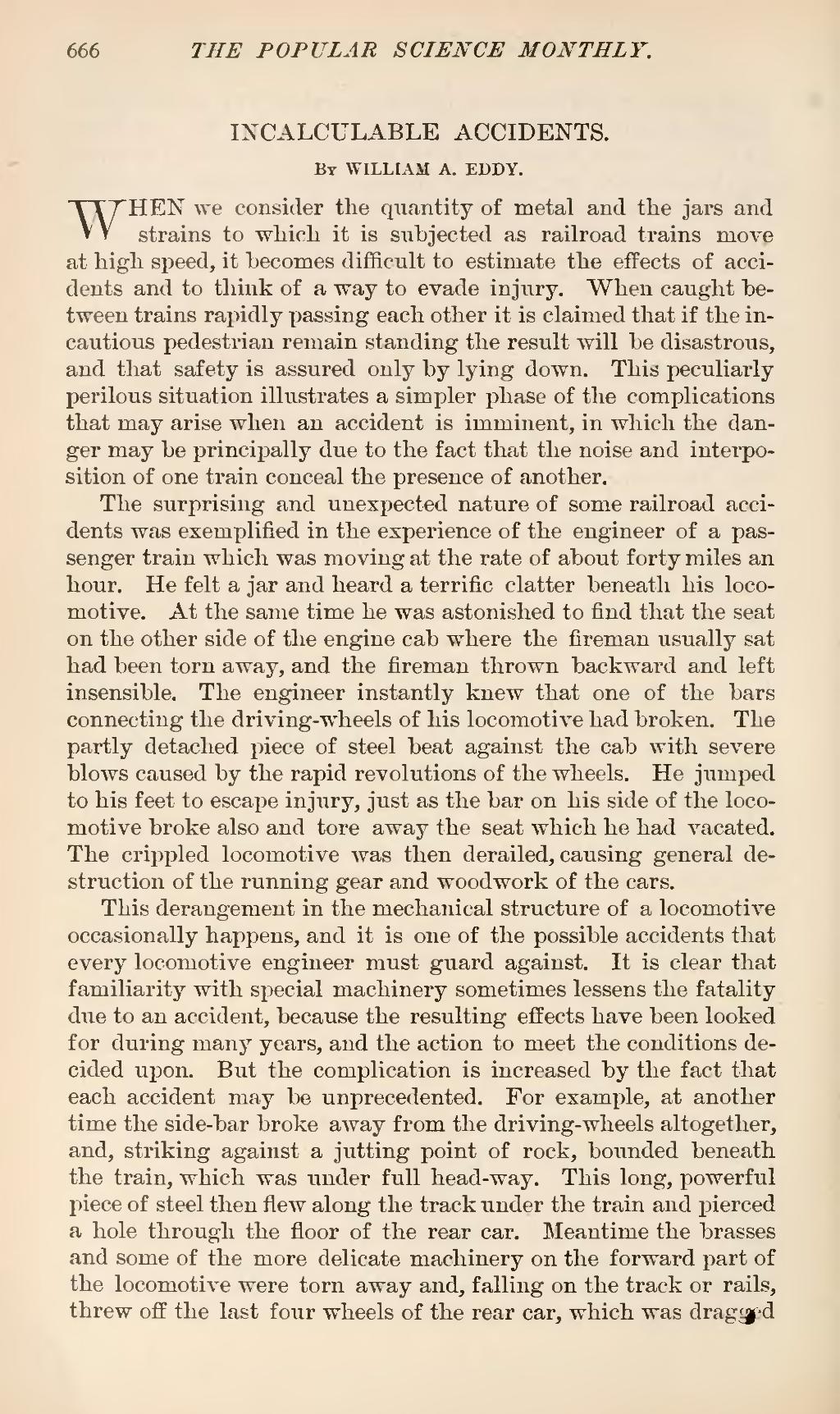| INCALCULABLE ACCIDENTS. |
By WILLIAM A. EDDY.
WHEN we consider the quantity of metal and the jars and strains to which it is subjected as railroad trains move at high speed, it becomes difficult to estimate the effects of accidents and to think of a way to evade injury. When caught between trains rapidly passing each other it is claimed that if the incautious pedestrian remain standing the result will be disastrous, and that safety is assured only by lying down. This peculiarly perilous situation illustrates a simpler phase of the complications that may arise when an accident is imminent, in which the danger may be principally due to the fact that the noise and interposition of one train conceal the presence of another.
The surprising and unexpected nature of some railroad accidents was exemplified in the experience of the engineer of a passenger train which was moving at the rate of about forty miles an hour. He felt a jar and heard a terrific clatter beneath his locomotive. At the same time he was astonished to find that the seat on the other side of the engine cab where the fireman usually sat had been torn away, and the fireman thrown backward and left insensible. The engineer instantly knew that one of the bars connecting the driving-wheels of his locomotive had broken. The partly detached piece of steel beat against the cab with severe blows caused by the rapid revolutions of the wheels. He jumped to his feet to escape injury, just as the bar on his side of the locomotive broke also and tore away the seat which he had vacated. The crippled locomotive was then derailed, causing general destruction of the running gear and woodwork of the cars.
This derangement in the mechanical structure of a locomotive occasionally happens, and it is one of the possible accidents that every locomotive engineer must guard against. It is clear that familiarity with special machinery sometimes lessens the fatality due to an accident, because the resulting effects have been looked for during many years, and the action to meet the conditions decided upon. But the complication is increased by the fact that each accident may be unprecedented. For example, at another time the side-bar broke away from the driving-wheels altogether, and, striking against a jutting point of rock, bounded beneath the train, which was under full head-way. This long, powerful piece of steel then flew along the track under the train and pierced a hole through the floor of the rear car. Meantime the brasses and some of the more delicate machinery on the forward part of the locomotive were torn away and, falling on the track or rails, threw off the last four wheels of the rear car, which was dragged
